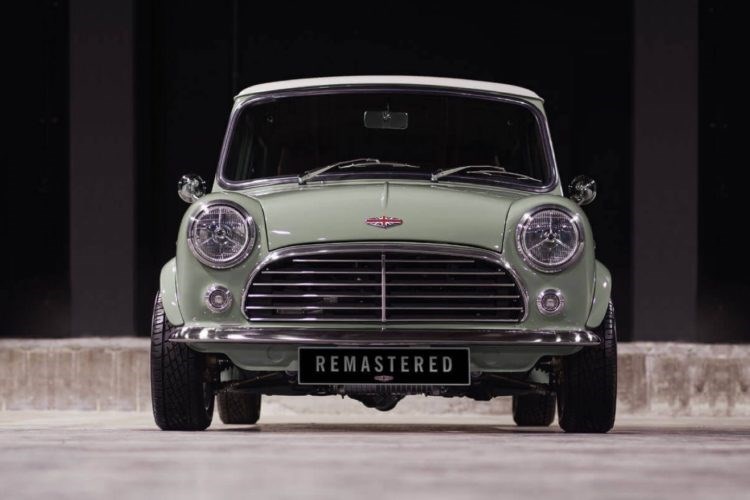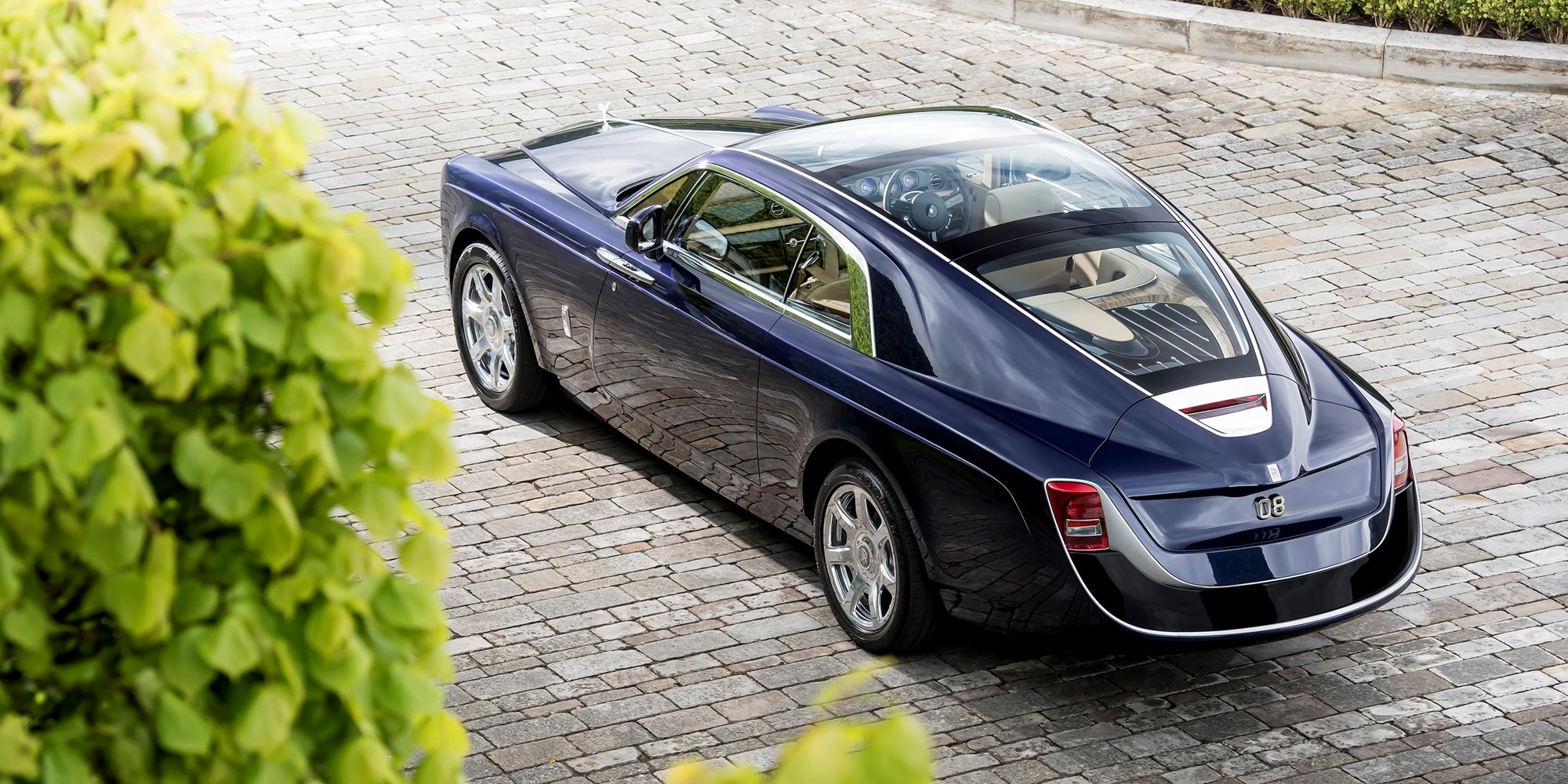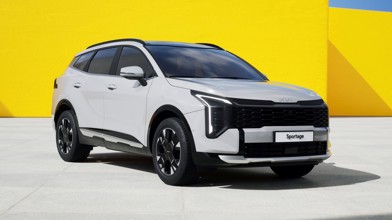If you want proof that American car manufacturers are taking the Chinese market extremely seriously — regardless of what their President may wish for — you have only to look at a concept car unveiled at the Shanghai Motor Show a couple of weeks back.
Coverage of the Jeep Yuntu concept kind of flew under the radar for the most part, but it’s an interesting unveiling for two reasons. First, it looks like a Jeep that Fiat Chrysler has been promising for some time; the seven-seater Wagoneer. Secondly, it’s for China and China alone. The big spoil sports.
Okay, so the dual-opening “suicide” door design is unlikely to make it into production but everything else on offer here looks impressive.
It up-ends the conventional seven-seater layout by having two big captain’s chairs in the second row and three seats in the third. There are touchscreens everywhere and many cows have been sacrificed for the interior trim.
The concept at least features a hybrid powertrain that, says its designers, can theoretically be charged wirelessly.
It also features a drone that flies ahead of the vehicle when off-road and scans potential paths, effectively creating a sort of semi-autonomous mud-plugger butler/droid. Cool.
If the Yuntu is approved, Jeep will co-develop the model with the Guangzhou Automobile Industry Group (GAC).
The appearance of the Yuntu still doesn’t, however, answer our main question: when is the Wagoneer and Grand Wagoneer luxury pairing going to surface?
New Zealand’s Fiat Chrysler boss David Smitherman told media at a Jeep event this year that it would be 2019 before we saw the Range Rover rivalling top-shelf SUVs.
Although across the Tasman, Smitherman’s equivalent, Guillaume Drelon, popped the party balloons this week when he told the Aussie media pack that Wagoneer production for right-hand-drive markets remains far from assured.
Going on what we’ve seen of the Yuntu, it looks like the better prospect, anyway. Not that we’ll be getting that either, of course.
Mini maximised

Photo / Supplied
A few months back, a colleague of The Good Oil happened to attend a Mini media event in the UK, at which, for a lark, the manufacturer had organised for a fleet of original Minis of 1960s vintage to transport motoring hacks between London launch venues.
“Oh goody”, thought our colleague. He had been toying with the idea of buying an old Mini as a project car. The chance to travel in one — albeit as a passenger rather than a Paddy-Hopkirk-helmeted driver — should prove bags of fun.
How wrong he was. A wheezing heater that refused to clear misty windows in autumnal fogs, the perpetual smell of petrol wafting through the cabin, a semi-collapsed passenger seat and the unceasing feeling that collision with the underside of a Ford Transit was imminent, made him swear off the pipe dream.
His experience might have been better had it been one of David Brown Automotive’s Mini Remastered cars.
DBA gets its bodyshells from British Motor Heritage and painstakingly de-seams them, so the original car’s unsightly roof gutters disappear along with those diagonal seams at the rear.
The suspension is new and every Mini Remastered gets a 1275cc engine. Inside, the old is redressed with new; new leather and alcantara trim, along with proper air conditioning and a Bluetooth-capable audio system.
The weight-saving sliding windows that were a feature of original Minis are replaced with electric windows, although the starter button stays between the front seats.
Assembly takes around 1400 hours. DBA has order books for 250 cars a year, with plenty of buyers keen on some modernised Mini nostalgia.
The drawback? This Mini comes with a maxi bill; £80,000 (about NZ$145,000). But if an olde worlde Mini that drives like a new one — and features all the mod cons of your average VW Golf — is your thing, then a DBA Mini Remastered will feel like the bargain of the century.
High-end collector goes ga-ga for Roller liftback

RR Septail. Photo / Supplied
Yes, yes, the Rolls-Royce Sweptail, shown off in all its swoopy glory at the exclusive Concorso d’Eleganza classic car event at Villa d’Este on the shores of Lake Como last week (and featured in Driven last week), is indeed extremely nice looking.
It’s a one-off, too. Some tycoon — for whom collecting bespoke planes, yachts and cars is a “hobby”, Rolls-Royce obsequiously mentions in its official release — asked for a Roller of his own, with a panoramic glass roof, two seats and a “1920s/30s style” swept rear end.
The Sweptail has been in the planning for four years and the details are impressive in their ostentatiousness; Macassae Ebony and open-pore Paldao woodwork with moccasin leather, illuminated glass feature lights and a polished hat shelf (seriously), augmented by bespoke carbon fibre panniers for high-end fund trader laptops (or Faberge eggs or something).
The customer wanted a Roller that evoked the idea of a 1925 Phantom I Round Door and a 1934 Phantom II Streamline Saloon.
We can’t even be bothered looking those cars up. Yes, call us cynical, but here at The Good Oil we’re feeling increasingly jaded (as opposed to inlaid-with-jade) at the notion of one-off luxo-barges like this being created for billionaires, to be then traded among other billionaires at exclusive auto auctions for the rest of time. Give us a daily-driver with a couple hundred thousand kms on the clock and a story to tell any day.
Still, the Sweptail makes the Rolls-Royce Wraith look like a solid, unpretentious buy in comparison.




